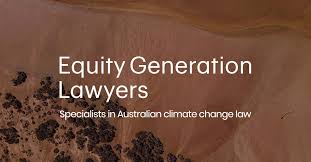Understanding Generational Equity Lawsuits
Generational equity lawsuits center around the principle that different generations should bear their fair share of societal responsibilities, costs, and burdens. In the simplest sense, these lawsuits challenge practices, policies, or contracts that shift excessive costs or risks onto future generations, unjustly burdening them with obligations they did not create. Imagine older generations making decisions—whether related to national debt accumulation, environmental degradation, or public pension shortfalls—that saddle younger and future generations with the long haul of repayment or remediation. That’s the crux of how generational equity lawsuits operate.
From a legal standpoint, these lawsuits can come in many shapes and forms. Some involve environmental groups suing governments or corporations over climate change impacts, alleging that decisions made today will disproportionately harm younger generations in the future. Others could involve public finance claims—contesting how current debt obligations or unfunded liabilities are financed in ways that burden future taxpayers. The common thread is: actions taken now resonate far into the future, and someone has to pay the price. Generational equity lawsuits demand that this distribution of costs be neat, fair, and just across age cohorts.
These lawsuits are not just legal maneuvers—they are moral statements. They argue that we should not mortgage the future for short‑term gain. Whether through climate litigation or fiscal accountability mechanisms, they aim to ensure that the benefits and burdens of policy choices are distributed across generations in a just manner. This sets the stage for families, communities, organizations, and societies to wrestle with questions of fairness, responsibility, and long-term well‑being.
The Moral and Ethical Foundation Behind Generational Equity
At the heart of the concept is a deeply rooted ethical belief: that no generation should unfairly reap the benefits at the expense of another. A generational equity lawsuit often emerges from an outcry against systems or decisions that allow one group—typically those in power or with immediate interests—to prosper while pushing the bill onto those yet to be born or those too young to have consented to the borrowing or environmental impact.
Ethically, this principle demands inter Generational Equity Lawsuits justice. It suggests a contract across time: we get to enjoy progress, innovation, programs, economies, and freedoms, but we hold the responsibility to leave a world that is, at the very least, as viable and flourishing as the one we inherited. A generational equity lawsuit, therefore, is both a legal recourse and a plea for moral accountability—a reminder that future citizens have rights too.
This moral underpinning also reflects a form of stewardship. Whether it is environmental conservation, prudent debt management, or sustainable infrastructure, stewardship principles urge present generations to act in ways that protect future capacities and potentials. In this sense, launching a lawsuit is less about confrontation and more about responsibility—it is about ensuring accountable governance and equitable distribution of burdens and benefits through time.
Areas Where Generational Equity Lawsuits Are Emerging
Environmental and Climate-Related Claims
One of the most visible arenas for generational equity claims today is climate change litigation. Young plaintiffs—often represented by advocacy groups or public interest attorneys—have begun suing states or industries for failing to reduce greenhouse gas emissions. Their argument hinges on the claim that current inaction will leave them with escalating climate disasters: sea‑level rise, extreme weather events, flooded cities, lost livelihoods. The legal stance is that such harm infringes on their rights to life, liberty, and property, as well as their ability to enjoy the same livability that older generations have had.
These cases often demand sweeping remedies—government mandates to cut emissions, investments in renewable energy, or even financial reparations. While outcomes vary below and across jurisdictions, the broader effect has been to amplify the moral urgency. What’s noteworthy is that many of these lawsuits are being brought by plaintiffs who are children or adolescents, underlining the inter Generational Equity Lawsuits impact and urgency.
Public Debt and Fiscal Policy Litigation
Another front in the generational equity landscape involves lawsuits challenging fiscal practices that push today’s deficits into tomorrow’s budgets. Picture governments with substantial unfunded pension obligations, rising healthcare costs, or ballooning national debts. When policymakers choose to defer costs rather than balance budgets, they effectively require repayment by those not yet in or barely entering the workforce.
These lawsuits often seek declarations that such actions violate constitutional duties, statutes, or fiduciary responsibilities to future taxpayers. While most suits have struggled in court because of broad sovereign immunity or lack of judicially enforceable standards, they have nonetheless played a role in public discourse—nudging legislatures toward reform, transparency, or more conservative debt practices.
Infrastructure and Public Works
Infrastructure projects—roads, bridges, water systems, airports—often follow funding models that pass on debts, tolls, or maintenance needs to future users. Generational equity lawsuits in this space can challenge publicly financed projects that seem to disproportionately benefit current users while saddling future citizens with long-term costs. Whether it is a major public works initiative requiring multi‑decade bonds, or complex public–private partnerships (PPPs) that shift maintenance and risk onto the public purse, lawsuits may question who truly benefits and who ultimately pays.
These legal actions can spark renegotiations, renegotiations of risk-sharing clauses, or demand more transparency about lifecycle costs. Even if they do not prevail in court, Seattle‑style public hearings and democratic processes often follow, creating more equitable frameworks for public investment and finance.
Legal Theories Used in Generational Equity Lawsuits
Constitutional Rights and Intergenerational Fairness
Many generational equity lawsuits invoke constitutional principles—such as due process, equal protection, fundamental rights to life, or environment protection clauses—to establish standing and seek relief. Claims may argue that current policy failures infringe upon the rights of future generations. In many countries, constitutions recognize environmental protection, health, or welfare as fundamental. By extending those protections across time, younger or future individuals seek to secure an equitable share of constitutional goods.
This approach can face uphill battles: courts must balance policy discretion against abstract future harms. Yet when framed correctly—as imminent threats rather than distant hypotheticals—these claims can shift judicial thinking and even prompt legislative corrections or new regulations.
Trust Doctrines and Public Trusteeship
Another legal pathway uses trust or public trust doctrines. Under these doctrines, governments hold certain public resources—air, water, public lands—in trust for current and future generations. If a government acts in ways that degrade or privatize these resources, underfunds them, or fails to maintain them, a generational equity lawsuit can allege breach of that trust.
When applied effectively, trust doctrines provide compelling legal leverage: courts can impose affirmative duties (restore public assets), preventive relief (halt damaging actions), or monetary redress. The success of such strategies lies in demonstrating a causal link between present decisions and degradation of public resources held in trust.
Fiduciary Obligations and Agency Law Arguments
Coming at Generational Equity Lawsuits through agency and fiduciary frameworks involves arguing that policymakers, trustees, and public officials owe duty of care not just to current, but to future stakeholders. If officials knowingly accept unsustainable budget deficits, ignore long‑term liabilities, or underfund critical infrastructure, they can be accused of breaching fiduciary duties.
While challenging sovereign entities through these arguments is difficult, lawsuits have succeeded politically—forcing the formation of oversight bodies, fiscal responsibility boards, or public-engagement mandates. Courts may not always rule in favor of plaintiffs, but the threat of fiduciary exposure often compels policymakers to re-express commitment to future generations.
Major Examples and Landmark Cases
Climate Change Suits by Youthful Plaintiffs
Two high-profile cases typify the Generational Equity Lawsuits movement: One involves a suit where a group of young people alleged that failure to act on climate change violated their rights to fundamental protections and imposed catastrophic generational burdens. The courts’ rulings varied—some judges were sympathetic, others skeptical—but in all cases the suits garnered global attention, spotlighting the intergenerational dimension of environmental harms.
These cases helped drive stricter emissions regimes, even where courts declined to issue sweeping remedies. In a few jurisdictions, courts recognized legal standing based on future harm, opening the door for broader future filings. The consistent message has been that climate inaction is inter Generational Equity Lawsuitsinjustice—and civil systems can and should respond.
Fiscal Responsibility Litigation
Around the world, lawsuits have challenged budget practices that leave young taxpayers with ballooning endowments of debt. One example involved a challenge in a provincial court, where local plaintiffs argued that unfunded pension liabilities violated obligations to future public sector employees. Courts placed pressure on governments to disclose actuarial assumptions, adopt realistic accounting measures, and establish funding reserves.
Some of these lawsuits ended in legislative settlements—rather than court judgments—where governments agreed to more prudent fiscal arrangements, long-term budgeting plans, and independent supervisory bodies. Even without direct judicial mandates, these legal actions influenced public policy dynamics.
Water Rights and Public Trust Cases
Generational equity has also been litigated in the context of water rights. In one coastal region, suits were filed arguing that concessions making private use of groundwater and coastal water would unfairly deplete resources and impose downstream consequences on future users. The court recognized that coastal and groundwater resources were held in trust on behalf of all current and future citizens. Through partial victory, the court ordered stronger oversight and maintenance of sustainable usage levels, protecting future access.
These verdicts have become precedent for broader trust‑based generational equity claims, reinforcing governance safeguards for natural resources.
Challenges and Limitations of Generational Equity Lawsuits
Legal Standing and Proximity
A persistent hurdle is standing—the ability to demonstrate that prospective plaintiffs have suffered a concrete and particularized injury. Courts often balk at claims on behalf of “future people,” asserting that future harms are speculative or non‑justiciable political questions. Generational Equity Lawsuits must therefore show that harms are imminent, measurable, and redressable. That requires scientific data, economic impacts, or other tangible indicia of harm to this generation now or soon.
While some jurisdictions are navigable—notably environmental courts or international human rights tribunals—the imbalance between urgency and judicial conservatism remains a structural barrier.
Separation of Powers and Democratic Oversight
Critics of generational equity lawsuits argue they entail judicial overreach, intruding into matters reserved for the legislative or executive branches. Finance critics assert that determining inter Generational Equity Lawsuits fiscal equity belongs in ballot boxes or parliaments—not courthouses.
Courts thus face tension: They must balance safeguarding rights across time against preserving democratic self‑government. Judicial reluctance to impose sweeping remedies—especially on national budgets or energy policies—remains high.
Evidence, Causation, and Forecasting
Proving that today’s decisions will produce quantifiable harm decades later requires rigorous forecasting models and attribution science. Climate litigation relies heavily on complex climate models, emissions projections, and economic impact studies. Fiscal suits require actuarial assumptions, demographic projections, and interest rate forecasts. Infrastructure liability suits need lifecycle analyses and engineering cost projections.
The complexity of this evidentiary terrain raises the bar for plaintiffs—heightening the cost and duration of litigation, and often inviting counterarguments from defendants.
Strategies for Strengthening Generational Equity Lawsuits
Strategic Use of Science and Expert Testimony
Given the need for precise evidence, successful lawsuits invest deeply in expert testimony—climate scientists, economist actuaries, hydrology experts, or infrastructure engineers. When courts can see clear causal lines, they are more inclined to rule that inter Generational Equity Lawsuits harms are real, imminent, and preventable.
Expert-backed litigation also shapes public perception, educating citizens about how today’s financial and environmental decisions reverberate into the future. This makes courts more receptive to granting extraordinary remedies—whether injunctions, mandatory emissions targets, or funding mechanisms.
Coalition Building and Public Engagement
Lawsuits that incorporate coalitions—youth groups, indigenous communities, climate advocates, labor unions—carry moral resonance and political force. Broad societal mobilization lends legitimacy, supports standing arguments, and sustains public attention.
Part of this engagement may include local hearings, open letter campaigns, media education efforts, and aligning litigation with legislative or referendum initiatives. This holistic pressure forms a system of accountability extending well beyond court walls.
Hybrid Legal–Political Approaches
Some of the most effective Generational Equity Lawsuits efforts couple litigation with parallel political efforts. While lawsuits proceed, advocates engage legislators, regulatory bodies, and international institutions—shaping policies, budgets, and regulations directly.
A lawsuit may establish legal urgency, and political actions may translate it into binding environmental laws or fiscal transparency regimes. The combination reduces obstacles, improves outcomes, and embeds inter Generational Equity Lawsuits within institutional frameworks.
Future Directions for Generational Equity Legal Advocacy
Generational Equity Lawsuits is poised to evolve through several emerging vectors:
International Human Rights Mechanisms. Courts at the national level may reject standing or remedies, but international bodies—such as human rights commissions or climate tribunals—are increasingly receptive. Global precedents could later be transposed into domestic law.
Indigenous Rights and Traditional Stewardship. Increasingly, indigenous knowledge systems emphasize long-term protection of water, land, and biodiversity for multiple generations. Embedding these principles in legal arguments brings alternative frameworks that strongly support inter Generational Equity Lawsuitsfairness.
Technological and Financial Innovations. Blockchain, green bonds, carbon credits, and sustainable infrastructure financing generate new legal instruments. When statutory trust frameworks incorporate these innovations, it becomes easier to design enforceable generational equity mechanisms.
Youth Leadership and Grassroots Momentum. As youth climate strikes and future‑generation advocacy spread globally, generational equity movements gain moral force and political urgency. This pressure often shapes litigation outcomes and spurs legislative innovation faster than courts alone.
Conclusion: Generational Equity as Mission and Practice
A generational equity lawsuit is more than a means to force policy change—it embodies a broader social call to action. These lawsuits remind us that decisions made today—whether about debt, defense, healthcare, infrastructure, or emissions—are investments or liabilities for those to come. Justice demands that we not leave disproportionate debts, risks, or environmental devastation for future generations to clean up.
While courts remain cautious and doctrinal limits persist, generational equity lawsuits serve vital purposes. They expose intertemporal imbalances, compel transparency, foster stewardship mindsets, and often spark reforms beyond litigation. Moreover, they empower voices often unheard—children and future‑oriented citizens—to assert rights across time.
Ultimately, generational equity lawsuits challenge us all to embrace long‑term thinking, moral responsibility, and sustainable policymaking. By ensuring that costs and benefits are shared fairly across generations, they set a record that prudent governance must look backward and forward equally—and treat future life not as collateral, but as rightful beneficiaries of what we build today.



